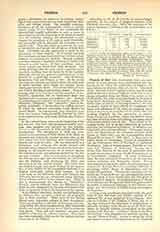

Friends of God (Ger. GOTTESFREUNDE), an association of pious persons, both ecclesiastical and lay, having for its object the cultivation of holiness; its name alludes no doubt to John, xv, 14, 15. The circle of the “Friends of God” appears to have had its origin in Basle between the years 1339 and 1343, and to have thence extended down the Rhine even as far as the Netherlands, the cities most prominent in its history being Basle, Strasburg, and Cologne. Seeing the disturbed state of society in the large territory, the holy associates united in their efforts to counteract the many evil influences of the time, by applying themselves zealously to the practices of the interior life, and working diligently for the conversion of sinners. From this group of ascetics, whose sole bond of union was their common desire for holiness, the great school of German mystics took its rise. They aimed at becoming saints, and at giving edification at Catholic devotion, not heterodox enthusiasm; at affective contemplation, not arid speculation. Their great leaders were two Dominicans, the eloquent preacher John Tauler (c. 1300-1361), and the contemplative writer Blessed Henry Suso (c. 1300-1365); to these must be added Henry of Nordlingen, Conrad of Kaiserheim, and the Dominicans John of Tambach (a celebrated theologian), John of Sternengassen, Dietrich of Col-mar, and Nicholas of Strasburg. Among those whom they directed in the path of perfection were several communities of nuns, chiefly Dominican (e.g. in Unterlinden, Engelthal). Of these Dominicanesses, the most renowned for sanctity are the mystical writers Christina and Margaretha Ebner. Among their disciples living in the world, the following may be mentioned: Rulman Merswin, a wealthy merchant of Strasburg (1382), Henry of Rheinfelden, and the knight of Landsberg. The sermons, treatises, and letters of the “Friends of God” are remarkable for beauty of style, those of Suso constituting the best prose of the fourteenth century, the correspondence of Henry of Nordlingen and Margaretha Ebner being the earliest examples of epistolary literature in the German language, and the sermons of Tauler being masterpieces of eloquence.
As long as the association remained under the guidance of men like Suso and Tauler, masters in the spiritual life, it was preserved from blemish. Suso was the founder of the Children of Mary, and, in an age that witnessed the decadence of scholasticism or scientific theology, both friends based all their mysticism on Catholic doctrine, particularly on the solid system of St. Thomas. As Suso’s “Book of the Eternal Wisdom” was composed for spiritual reading; so was his “Book of Truth” written to refute the errors and fanatic excesses of the Beghards and the Brethren of the Free Spirit. On his part, Tauler opposed the false mysticism of the Fraticelli and the schismatical tendencies of Louis of Bavaria. But the glory of the “Gottesfreunde” soon came to an end. A lay member of the association, Rulman Merswin, through either ignorance or fraud, brought the whole group of German mystics into disrepute. The doctrine of his alleged guide and master in the spiritual life—the mysterious layman of the Oberland (Der Gottesfreund vom Oberland), the “Friend of God” par excellence, to whom Merswin, in his posthumous work “Das Buch von den neun Felsen”, ascribes revelations, prophecies of impending chastisements, and a divine mission to purify the Church—was diametrically opposed to that of Suso, Tauler, and the others. Denifle has proved conclusively that Merswin’s great unknown is a myth, but, as the “Great Friend of God” had previously been regarded as the reformer of the hierarchy and a precursor of Luther, the recluse of the Oberland (Alsace) was much lauded and often quoted by those Protestant writers who asserted that true German mysticism was incompatible with Roman supremacy, scholastic theology, etc. After Rulman Merswin’s death, Nicholas of Basle became the leader of the pseudo-Friends of God, but was eventually condemned as a Beghard and burned at Vienna in 1409. Another prominent member of this sect, his disciple Martin of Mainz, had suffered a like punishment sixteen years before in Cologne, for submitting unreservedly to a layman and maintaining several heretical propositions. From the beginning of the fifteenth century, the “Friends of God”, whether orthodox or heterodox, disappear from the pages of history.
REGINALD WALSH

